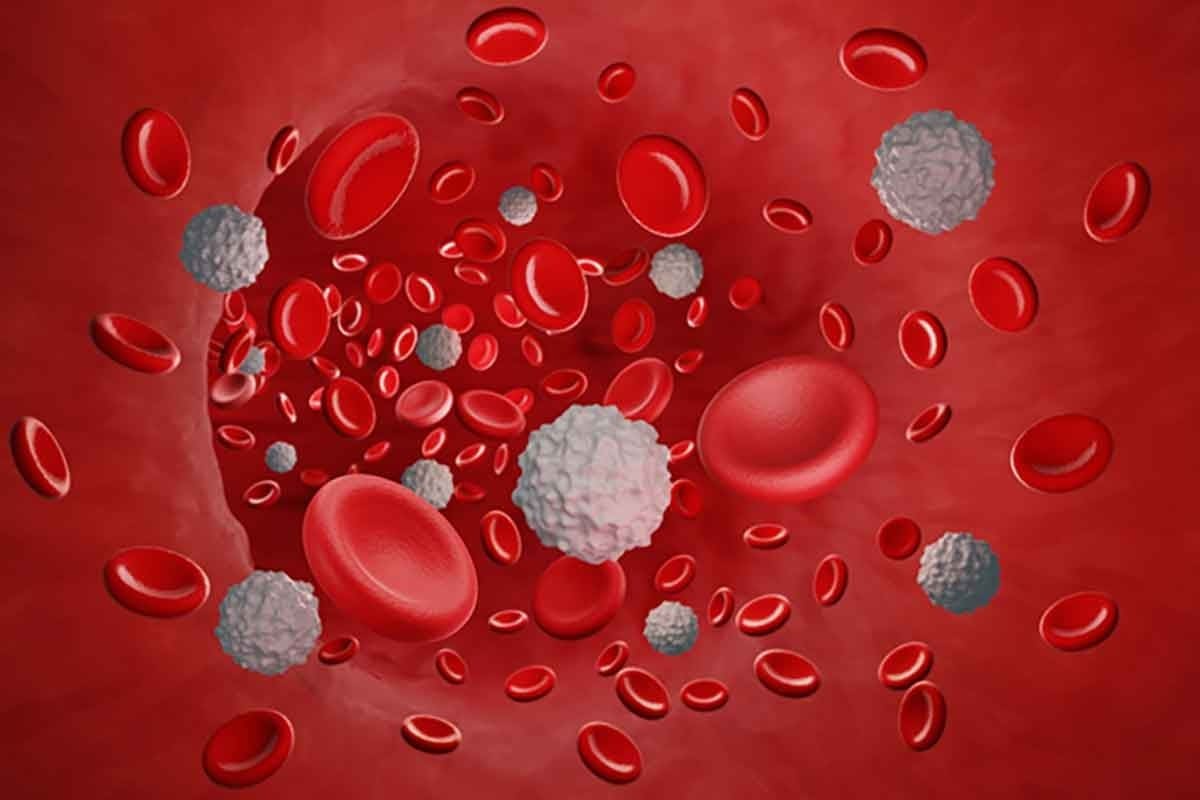Last Updated on November 26, 2025 by Bilal Hasdemir

At Liv Hospital, we know how important it is to talk about heart stent longevity. Stents are made to stay in arteries forever, helping blood flow to the heart. Most heart stents can last for 10 years or more, and they might work for a patient’s whole life. Learn how long do stents last in the arteries and what affects their lifespan.
Research shows stents can keep coronary arteries stable for 10-15 years. But, how long a stent lasts depends on the patient’s health and lifestyle. We guide patients in making smart choices for their heart health and stent longevity.
Key Takeaways
- Stents are designed to be permanent devices to keep arteries open.
- Most heart stents can last for many years, often a decade or longer.
- The lifespan of a stent can be influenced by patient health and lifestyle choices.
- Liv Hospital is committed to providing world-class care and support for patients with heart stents.
- Regular check-ups and a healthy lifestyle can help extend the lifespan of a stent.
Understanding Arterial Stents: Purpose and Function

In cardiology, stents are key to treating blocked arteries. They help keep arteries open, improving blood flow to the heart. This reduces symptoms of coronary artery disease.
What Are Stents and Why Are They Used?
Stents are small, mesh-like tubes made of metal or other materials. They treat coronary artery disease by keeping the arteries open. This ensures blood flows freely to the heart. Coronary artery disease treatment has improved a lot with stents, making surgery less necessary.
How Stents Are Placed in Arteries
The stent placement process is called angioplasty. A catheter is used to put the stent in the blocked artery. The stent is then expanded to open the artery, restoring blood flow. This stent placement is done under local anesthesia and takes about an hour.
| Procedure Step | Description |
| 1. Catheter Insertion | A catheter is inserted into the blocked artery. |
| 2. Stent Positioning | The stent is positioned at the blockage site. |
| 3. Stent Expansion | The stent is expanded to open the artery. |
Immediate Benefits After Stent Placement
Patients often see immediate benefits after stent placement. They experience better blood flow to the heart and less chest pain. The benefits of stents are huge, improving life quality for those with coronary artery disease. Most patients can go home the same day or the next day, depending on their health.
Stents not only improve heart health but also cut down the need for surgery. Understanding how stents work and their role in coronary artery disease treatment helps patients make better choices for their care.
Types of Stents and Their Design Differences

Arterial stents come in many types, like bare-metal, drug-eluting, and bioresorbable stents. Each type has its own design, materials, and purpose. They meet different patient needs and clinical situations.
Bare-Metal Stents: Structure and Longevity
Bare-metal stents are made from metals like stainless steel. They give structural support to the artery. They are:
- Made from a mesh-like structure
- Deployed using a balloon catheter
- Known for their simplicity and cost-effectiveness
But, bare-metal stents have a higher risk of restenosis. Restenosis is when the artery narrows again, needing more procedures.
Drug-Eluting Stents: Advanced Technology and Duration
Drug-eluting stents are an upgrade from bare-metal stents. They aim to lower restenosis risk. They:
- Release medication to stop cell growth
- Have a drug-coated surface
- Significantly cut down restenosis rates
These stents are popular for keeping arteries open. But, they need long-term antiplatelet therapy to avoid clots.
Bioresorbable Stents: The Temporary Solution
Bioresorbable stents, or bioabsorbable stents, offer temporary support. They are made to dissolve over time. They:
- Are made from materials the body can absorb
- Support the artery during healing
- Do not leave a permanent implant
The idea behind bioresorbable stents is to act as a temporary support. They disappear after their work is done. This could reduce long-term issues with permanent stents.
How Long Do Stents Last in the Arteries: The Expected Lifespan
Stent longevity is key to the success of arterial stent placement. Medical technology has made stents more durable and effective. Yet, the stent’s lifespan depends on several factors, like the stent type, patient health, and lifestyle.
Average Longevity of Modern Stents
Modern stents are built to last, with many lasting over a decade. Studies show that drug-eluting stents have a lower restenosis rate than bare-metal stents. We’ll dive into this more later.
Differences Between Short-Term and Long-Term Outcomes
Stent placement outcomes are divided into short-term and long-term results. Short-term results focus on immediate success and recovery. Long-term results look at the stent’s durability and the patient’s heart health. Knowing these differences helps manage patient care better.
Permanent Nature of Most Stent Placements
Most stent placements are permanent, staying in the artery for life. Yet, additional procedures or stent replacement might be needed due to restenosis or stent failure. For more on stent longevity, check out medical site.
| Factor | Impact on Stent Longevity |
| Diabetes | Increased risk of restenosis |
| Smoking | Reduced stent patency due to increased risk of clot formation |
| Hypertension | Increased stress on the stent, potentially leading to complications |
| Medication Adherence | Critical for preventing clot formation and ensuring stent patency |
Understanding these factors and taking proactive steps can help patients extend their stent’s lifespan. This improves their overall heart health.
Restenosis: When Stents Narrow Again
After a stent is placed, some people may see their artery narrow again. This happens because the body reacts to the stent. It can cause tissue to grow back inside the stent.
The Restenosis Process
Restenosis is mainly caused by the growth of smooth muscle cells and the buildup of tissue inside the stent. This can make the artery narrow again. It can cause symptoms similar to those before the stent was placed.
For more information on stent replacement, visit Medical News Today.
Incidence Rates and Timeframes
About 5-20% of patients experience restenosis within the first year after getting a stent. The risk is higher for people with diabetes or complex artery problems.
| Timeframe | Incidence Rate |
| 0-6 months | Higher risk |
| 6-12 months | Moderate risk |
| 1-2 years | Lower risk |
Warning Signs of Restenosis
It’s important for patients to know the signs of restenosis. These include chest pain, shortness of breath, or other symptoms like before the stent was placed. If these symptoms happen, it’s key to see a doctor right away.
Key symptoms to watch for:
- Chest pain or discomfort
- Shortness of breath
- Fatigue
- Dizziness or lightheadedness
Spotting and treating restenosis early can greatly help patients with stents.
Medical Factors Affecting Stent Longevity
Many medical factors can shorten the life of stents in arteries. It’s important for patients and doctors to understand these factors. This helps manage risks and keep the stent working well for longer.
Impact of Diabetes on Stent Durability
Diabetes can make stents last less time. People with diabetes often see their arteries get worse faster. Managing diabetes well is key to reducing this risk.
Studies show diabetic patients are more likely to have their arteries narrow again after a stent. Keeping blood sugar levels in check can lower this risk.
Hypertension and Cholesterol Considerations
Hypertension and high cholesterol can also affect stent longevity. High blood pressure can strain the stent, causing problems. High bad cholesterol can lead to more plaque in arteries, impacting the stent’s performance.
Controlling high blood pressure with lifestyle changes and meds is vital for stent health. Controlling cholesterol through diet, exercise, and meds is also key for stent success.
Other Medical Conditions That May Affect Stent Performance
Other conditions like kidney disease and chronic inflammation can also impact stent longevity. Kidney disease can affect how well the body handles meds, impacting the stent.
Telling your doctor about any health conditions is important for getting the best care.
| Medical Condition | Impact on Stent Longevity | Management Strategies |
| Diabetes | Increased risk of restenosis and stent failure | Blood sugar control, medication adherence |
| Hypertension | Additional strain on the stent, possible complications | Lifestyle changes, antihypertensive medication |
| High Cholesterol | Buildup of plaque in the arteries, affects stent performance | Dietary changes, cholesterol-lowering medication, exercise |
Lifestyle Factors That Influence How Long Cardiac Stents Last
After getting a cardiac stent, making lifestyle changes can help it last longer. Things like smoking, diet, exercise, and stress levels matter a lot. By choosing wisely, patients can keep their heart healthy and maybe make their stents last longer.
Smoking and Its Effects on Stent Patency
Smoking is bad for your heart and can shorten stent life. It damages blood vessel linings, making them narrow and block. Quitting smoking is key to keeping stents open and your heart healthy.
Research shows quitting can lower the chance of arteries narrowing again. It’s best to work with doctors to quit smoking. They can help with plans that include counseling, medicine, or other methods.
Diet and Exercise Recommendations for Stent Patients
Eating right and exercising are key for stent health. Eat lots of fruits, veggies, whole grains, and lean meats. Try to eat less saturated fats, cholesterol, and sodium.
| Dietary Component | Recommended Intake |
| Fruits and Vegetables | 5 servings per day |
| Whole Grains | 3-5 servings per day |
| Lean Proteins | Include in every meal |
| Saturated Fats | Limit to |
Doing physical activities like walking, cycling, or swimming is good. Aim for 30 minutes of moderate exercise daily, five days a week.
Stress Management Techniques to Improve Stent Outcomes
Too much stress can harm your heart and stent life. Activities like meditation, yoga, or deep breathing can help. They can reduce stress and improve heart health.
- Meditation and mindfulness practices
- Yoga and tai chi
- Deep breathing exercises
- Progressive muscle relaxation
Adding these stress-reducing activities to your day can help. It can lower stress and improve heart health.
Medication Adherence and Stent Longevity
For those with stents, sticking to medication is key to heart health. We stress the need to follow medication plans to keep stents working well.
Importance of Antiplatelet Therapy
Antiplatelet therapy is vital for stent patients. Medicines like aspirin and P2Y12 inhibitors (e.g., clopidogrel, ticagrelor) stop platelets from clumping. This helps avoid dangerous clots on the stent. It’s important for patients to take their antiplatelet meds as directed to avoid stent thrombosis.
The length of time on antiplatelet therapy depends on the stent type and patient risk. Usually, dual antiplatelet therapy (DAPT) is needed for 6 to 12 months, then aspirin long-term. We help patients find the right antiplatelet plan for them.
Other Medications That Support Stent Function
Other meds help stents work better and keep the heart healthy. These include statins for cholesterol, beta-blockers for blood pressure, and ACE inhibitors for heart function. Taking these meds as directed is key for stent and heart health.
- Statins: Lower cholesterol and reduce plaque buildup risk
- Beta-blockers: Lower blood pressure and heart rate, easing heart work
- ACE inhibitors: Relax blood vessels, improve flow, and lower pressure
Consequences of Medication Non-Compliance
Not taking meds as prescribed can harm stent patients. Stent thrombosis, restenosis, and myocardial infarction are risks. We emphasize the need to take meds as directed and keep follow-up appointments.
By understanding the role of medication adherence, patients with stents can ensure their stents last longer and work better. This improves their life quality.
Long-Term Studies on Stent Durability
Stent longevity has been studied for over a decade. These studies have given us key insights. They help improve patient care and guide treatment choices.
Research Findings on 7-11 Year Outcomes
Modern stents can last many years after they are placed. A study in a top medical journal showed drug-eluting stents work better than bare-metal stents. They had a lower rate of major heart problems over 7 years.
Another study followed patients for up to 11 years. It found that while some had restenosis, most stents stayed open. This was true for those who followed their treatment plans well.
“The long-term success of stents shows how far medical tech and care have come. Ongoing research keeps pushing the limits in heart health.”
Medical Expert, Cardiologist
Comparing First-Generation vs. Modern Stent Longevity
First-generation stents didn’t last as long as today’s stents. They were more likely to cause restenosis and needed more fixes. Modern stents, like drug-eluting ones, last longer and cause less restenosis.
- First-generation stents: Higher rates of restenosis, more frequent need for re-intervention
- Modern stents: Lower rates of restenosis, improved long-term patency
Ongoing Clinical Trials and Future Developments
Stent technology is always getting better, thanks to ongoing trials. These studies look at new stent designs, materials, and coatings. Future stents might be bioresorbable, dissolving without needing long-term medication.
As research goes on, we’ll see stents that work even better. This will lead to better care for heart disease patients.
When Stent Replacement or Additional Procedures May Be Needed
In some cases, you might need a new stent or more procedures to keep your arteries healthy. Stents work well but can face problems or fail over time.
It’s natural to worry about needing more help. So, it’s key to know when you might need a stent revision. We’ll look at when this is needed, the options for fixing failed stents, and how well these treatments work.
Indications for Stent Revision
Stent revision is needed when a stent doesn’t work right anymore. The main reason is restenosis, when the artery gets narrow again after a stent is put in.
- Restenosis within the stent
- Stent thrombosis (blood clot formation within the stent)
- Stent migration or deformation
These issues can cut down blood flow to the heart. This might cause chest pain or even worse heart problems.
Options for Treating Failed Stents
There are several ways to fix a failed stent, depending on the problem and your health.
| Treatment Option | Description | Success Rate |
| Angioplasty | A procedure to widen the narrowed artery | High |
| Stent-in-stent placement | Placing a new stent within the failed stent | High |
| Coronary artery bypass grafting (CABG) | Surgical bypass of the blocked artery | Variable |
Each option has its own good points and risks. Doctors will choose the best one for you.
Success Rates of Secondary Interventions
The success of these follow-up treatments depends on many things. This includes the first stent used, the type of failure, and your overall health.
Research shows that redo angioplasty and putting a new stent inside work well. They can be as good as the first time. But, how well they work also depends on your treatment and lifestyle choices.
It’s very important to follow up with your doctor and stick to your treatment plan. This helps keep your stent working well and any follow-up treatments successful.
Monitoring Your Stent Health: Follow-Up Care
Good follow-up care for stent patients includes regular check-ups, tests, and education. Keeping your stent healthy is key for your heart’s well-being. We aim to help you keep track of your stent health.
Recommended Check-Up Schedule
After getting a stent, you should see your doctor at set times. How often you go depends on your health and the stent type.
- First visit: 1-3 months after the stent
- Future visits: Every 6-12 months
Your doctor will check your health, look for complications, and change your treatment if needed.
Diagnostic Tests for Evaluating Stent Function
There are tests to check your stent and heart health. These tests spot problems early.
| Diagnostic Test | Purpose | Frequency |
| Stress Test | Checks heart function under stress | As your doctor suggests |
| Coronary Angiography | Sees the coronary arteries and stent | At first follow-up or when needed |
| Cardiac Imaging (e.g., Echocardiogram) | Looks at heart function and shape | Regularly, as part of ongoing care |
When to Contact Your Doctor
Know the signs of stent or heart problems. Call your doctor right away if you have:
- Chest pain or discomfort
- Shortness of breath
- Dizziness or fainting
- Unusual fatigue
By being careful and keeping up with care, we can make sure your stent works well for a long time.
Conclusion: Maximizing the Lifespan of Your Arterial Stent
Understanding what affects stent longevity is key. By following recommended lifestyle and medication plans, patients can extend their stent’s life. We’ve covered the different stent types, their designs, and how medical and lifestyle factors impact their durability.
Keeping your stent healthy means living a healthy lifestyle. This includes eating well and exercising regularly. It’s also important to take your medications, like antiplatelet therapy, as directed. Regular check-ups with your doctor are essential to keep an eye on your stent’s condition.
By using these strategies, patients can greatly improve their stent care and heart health. We’re dedicated to top-notch healthcare and support for international patients. Our goal is to help you get the best results for your health.
FAQ
How long do stents usually last in the arteries?
Stent longevity varies based on several factors. These include the stent type, patient health, and lifestyle. Modern stents can last up to 10-15 years or more.
What affects the longevity of heart stents?
Several factors impact heart stent longevity. These include medical conditions like diabetes and hypertension. Lifestyle choices, such as smoking and diet, also play a role. Medication adherence is important too.
Are there different types of stents, and do they last differently?
Yes, there are different stents. These include bare-metal, drug-eluting, and bioresorbable stents. Each type has its own longevity. Drug-eluting stents often have a lower risk of restenosis.
What is restenosis, and how can it affect stent longevity?
Restenosis is when the artery narrows again after a stent is placed. It can happen in some patients, usually within a year. Symptoms like chest pain or shortness of breath are warning signs.
How can I maximize the lifespan of my arterial stent?
To extend your stent’s life, maintain a healthy lifestyle. Eat well, exercise regularly, and manage stress. Taking prescribed medications, like antiplatelet therapy, is also key.
What are the consequences of not adhering to prescribed medication regimens after stent placement?
Skipping medications can raise the risk of stent thrombosis and restenosis. It’s vital to follow your doctor’s instructions and take medications as directed.
How often should I have follow-up care after stent placement?
Follow-up care frequency varies based on individual needs and medical history. Patients usually need regular check-ups with their doctor. Diagnostic tests and symptom reporting are also important.
Can stents be replaced or revised if they fail?
Yes, failed stents can be replaced or revised. The decision for additional procedures depends on symptoms and patient health.
What are the success rates of secondary interventions for failed stents?
Secondary intervention success rates vary. They depend on the procedure and individual patient factors. These procedures can often restore blood flow and ease symptoms.
How long do cardiac stents last on average?
Cardiac stents can last from 7 to 15 years or more. This depends on the stent type and patient factors.
What lifestyle changes can I make to support my cardiovascular health after stent placement?
To support your heart health, consider quitting smoking and eating healthy. Regular exercise and stress management are also important.
References
- Kastrati, A., Hall, D., & Schömig, A. (2000). Long-term outcome after coronary stenting. Circulation, 101(14), 756-763. https://pmc.ncbi.nlm.nih.gov/articles/PMC59599/






